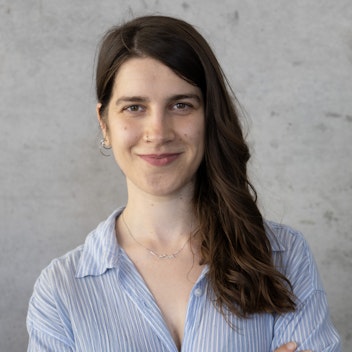
For a society to truly thrive it depends on Third Places, public or semi-public spaces of encounter. The desire for places of social interaction is deeply ingrained within human nature. No wonder that entire business strategies now revolve around them. It’s high time we return Third Places to their roots!
Everyone knows Starbucks. We are all familiar with its dark green trademark and can hardly imagine a major city without one. Despite the long history of well-established coffee cultures in many different countries, Starbucks has managed to assert itself over the years. Both in the United States, where the company has its headquarters, and on a global scale. But what makes Starbucks so successful? Drawing inspiration from the European café model, Starbucks is first and foremost a gathering place where people can meet friends and acquaintances, socialize with new people, or simply enjoy some peaceful solitude amidst a vibrant and trendy ambiance.
A Third Place exists outside the confinements of the first place, home, and the second place, work, creating a new communal and public place.
Zoe Krueger Weisel and Mila Miletić
Coined by sociologist Ray Oldenburg, a place as such is called a “Third Place” (1989). A term, which Starbucks itself has now embraced and cleverly incorporated into its business strategy. A Third Place exists outside the confinements of the first place, home, and the second place, work, creating a new communal and public place. According to Oldenburg, these places include town squares, bars, cafes, and any other places where people have the opportunity to meet different people, exchange ideas, network, relax and enjoy their free time without having to spend money. As you read this blog post, you yourself may be in a Third Place.
The difference between Third Place and Third Space
What makes the concept of “thirdness” so appealing and versatile in its far-reaching application, that even large companies like Starbucks make use of the Third Place term? Third Place is often used synonymously with the idea of Third Space. The two concepts overlap in that they both try to overcome the pure material binary nature of our experiences. Employing place and space in different contexts is not a new phenomenon. In the field of social geography, for example, there is a broad consensus that space is constructed through social relations and actions – and is therefore interrelational.
The idea of Third Spaces was inspired by the deconstruction of binary ways of thinking in other disciplines. In migration and Expat research, for example, the term “Third Culture” is often used to explain the complex nature between home and host cultures. Third Spaces stand for radical openness and changeability – and are therefore also seen as spaces of resistance. Borrowing from postcolonial and feminist studies, social geographers deliberately coined the term Third Space (sometimes also written as thirdspace) in a flexible and open way. The hope was to encourage a constant flow of different ideas and events and to give the term a transdisciplinary orientation. In doing so, they left the term open to a variety of uses, with the result that actors with less social goals could now also appropriate the term.
A functioning society needs Third Places
Third Places are primarily community-run places. Described in the literature as commons1, they aim to serve the vitality of a community while constantly trying to overcome the polarities of openness and closeness, as well as inclusivity and exclusivity. Public goods, including both spaces and places that in their own way resist the neoliberal policies of privatization, financialization, commodification, and new imperialism have not yet entered the mainstream. In his 1968 essay “The Tragedy of the Commons” microbiologist and ecologist Garett Hardin presumed two “inevitable” scenarios for all commons: central regulation by state or privatization. More than 50 years after his prediction, we must ask ourselves the question: Are there still accessible (third) places where people can gather free of financial constraints, or have they indeed met a tragic fate?
The good news is that yes, there are many, and no, Starbucks is not one of them. One example of such a place is the Street Gallery in Belgrade. Now run by an art collective, the gallery began with the revival of a neglected street in the city center. Eventually it became an open gallery with an ongoing program of exhibition openings, concerts, performances, and debates, which was well received despite or perhaps because of the hostile political environment in the capital. By placing art in the public space and by promoting young and socially engaged artists, Belgrade’s Street Gallery makes art accessible to a large number of people, while at the same time focusing on topics that have sometimes been ignored for decades. These mainly include socially significant issues such as the future of urban development and cultural practices. However, as some critical social geographers have argued, simply acknowledging the existence of something does not necessarily empower it. In this case, the gallery not only provided a space for discussion and engagement with a wider audience, but also inspired other similar initiatives in the country, creating a network of street galleries in Serbia.
Third Places should be accessible to everyone, affordable, spontaneous, and stress-free. They should create space for discussion and the exchange of different perspectives.
Zoe Krueger Weisel and Mila Miletić
Accessible, affordable, spontaneous and stress-free
Third Places are important for a well-functioning society. They foster social connections, the exchange of ideas and the creation of a shared identity. Especially in times of the coronavirus pandemic and the associated restrictions on movement, it became clear how important it is to have access to places outside one’s own four walls and the workplace. But what happens when these Third Places are created by large corporations like Starbucks? When they are used as part of a marketing strategy and guided by capitalism? Can we then truly still speak of Third Places à la Oldenburg?
To answer this question, we need to remind ourselves of the necessary criteria. Third Places should be accessible to everyone, affordable, spontaneous, and stress-free. They should create space for discussion and the exchange of different perspectives. A company like Starbucks, which has grown from a small coffee shop in a corner of Seattle to a multimillion-dollar franchise, can hardly be that kind of place anymore. Especially when considering that Starbucks is not accessible to everyone but rather demands consumption (and it's no secret that Starbucks is not cheap) as a prerequisite for entry. Thus, this attracts a certain kind of customer base who can afford to be there. Large corporations whose marketing strategy actively targets the artificial creation of Third Places therefore have a kind of position of power within society. This also includes companies such as Meta (Facebook, Instagram, WhatsApp etc.) or ByteDance (TikTok), which, employing the help of their online platforms and cookies, aim to replace or at least redefine the physical Third Place concept with digital alternatives. They can design these (virtual) places, control access and appropriate the Third Place concept in any way they see fit.
It is of utmost importance for a society to maintain and preserve spaces that can function as physical Third Places. Especially in the age of digitalization, social media and the rise of smart working.
Zoe Krueger Weisel and Mila Miletić
We cannot let big corporations take over public spaces
It is of utmost importance for a society to maintain and preserve spaces that can function as physical Third Places. Especially in the age of digitalization, social media and the rise of smart working. Places like the Street Gallery in Belgrade, libraries and parks that are not related to consumption and profit and are truly inclusive and open to all. So, when Starbucks claims to be a Third Place between home and work, the heart of social vitality of the community, while simultaneously weaving its narrative around a product, relationships and a sense of belonging the question is not only for whom Starbucks is inclusive and accessible. The question is also how to reclaim the notion of the Third Place to meet the tremendous human need for community spaces, which allow for people to interact without consumption. We cannot allow the term and the concept to be stolen from us by large corporations with selfish agendas.
Authentic Third Places should always benefit society as a whole and contribute towards strengthening the community. They are essential to creating a healthy and participatory society. They help break down the binary of home and the workplace and give us space to be ourselves. However, we need to proceed with caution and understand that not all places outside of home and work are automatically Third Places. Recognizing the actors and motives behind the creation of these places is crucial to help us make informed decisions about where and how we want to spend our limited free time.
References and information:
- Based on the writings of Elinor Ostrom commons are defined as a social practice of governing a resource, not by state or market but by a community of users that self-governs the resource through the institutions it creates.
This article was originally published in German language in the stayinart Bookazine, issue THE NEW WORLD 1/24, under the title "Third Places: Dritte Orte für Kunst, Kultur und Begegnung."


Citation
This content is licensed under a Creative Commons Attribution 4.0 International license except for third-party materials or where otherwise noted.






